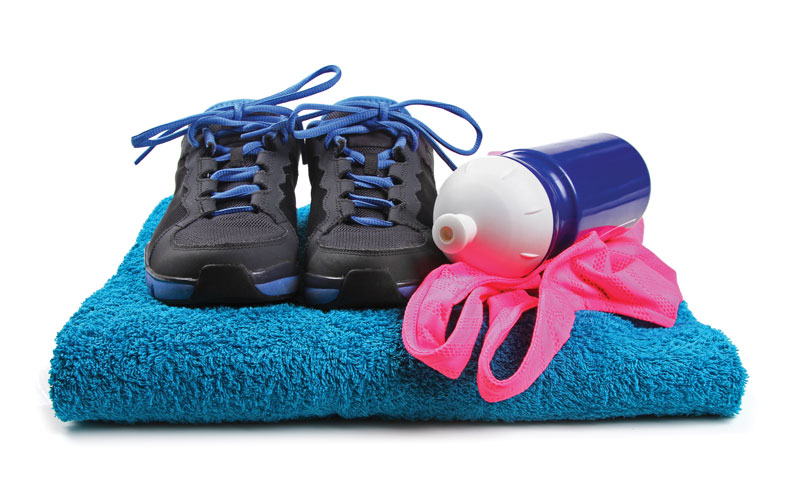We can all agree that the benefits of exercise are endless, however despite this many of us do not have a workout routine. The reasons differ from person to person but most commonly include limited time, pain, and frustration with not seeing results. When several obstacles are in our way we become less likely to put forth the energy, and when we do we are less likely to find joy in it. In order to overcome these ruts we need to explore the various hurdles that may be preventing you from getting into a healthier routine.
No Time to Exercise?
Time, or lack there of, is the number one reason people do not exercise. Exerting any additional energy at the end of a long day can seem nearly impossible. Having to drive to and from a gym on top of that makes the task seem even more daunting. However, if doing the right type of exercise a person does not need a ton of time or a gym to get a good workout. Studies show that by doing interval style and resistance workouts people can get the same amount of benefits while working out half as long as if doing aerobic exercise. While interval training sounds like one must be an athlete or at least in great shape, this isn’t necessarily the case. Rest based exercise is a form of interval training that offers the same results and can be modified to accompany each individual’s fitness level. The premise of this workout out is “push until you can’t, rest until you can”.
For example, if you are using a treadmill, you would “give it your all” until you reach fatigue, and then you slowly walk or stop completely until you have the energy to push yourself again. Doing this type of back and forth exertion allows the body to burn a greater amount of fat and build more muscle as opposed to exercising at a steady state for twice the amount of time.
What If It’s Painful?
The next major deterrent is pain. This is a catch-22 because the lack of movement can worsen discomfort within the body. When we exercise our bodies produce anti-inflammatory chemicals, which helps prevent diseases from worsening and can also lead to symptomatic control of pain. If you feel that your body isn’t in a strong enough state physically, it is worth having your physician help you explore potential causes. Conditions such as rheumatoid arthritis, Lyme disease, fibromyalgia, and even depression are all possible causes for muscle or joint aches. Once a proper diagnosis is made, a treatment plan can be created to control symptoms and help you get back to doing regular activities as well as exercising.
Why Isn’t It Working?
Ok, so what about those of us who exercise but do not see the results we are looking for? This can be extremely frustrating, especially if other people doing the same workout are losing weight and gaining muscle. How can it be that one person can have amazing benefits when another person cannot? Well, obviously we are all unique individuals so exercise is not a one size fits all model. There is more to gaining the desired results than the type of exercise you choose. Our lifestyle factors such as nutrition, sleep, and stress levels, can play a large role in how our body recuperates after exercising. Chronic inflammation, hormonal imbalances, and digestive health all play a part as well. When all these factors are viewed together we begin to see why choosing a holistic approach to our health is necessary to optimize the energy put into exercising and gain the best results.
I’m Too Stressed Out
Another major hurdle is the feeling of stress that can come with the thought of working out, however stress itself contributes to similar negative health effects as lack of movement does. Let us take a closer look at what is happening within fat cells (adipocytes) to help explain this. Within adipocytes there is an enzyme responsible for converting cortisone into its active form cortisol. As you may know cortisol is known as the stress hormone. This is because cortisol often increases under stress, and elevated levels contribute to abdominal weight gain and impaired blood sugar levels. Therefore the more fat cells a person has means there will be a greater adipocyte production of cortisol. Add this cortisol and the increased amounts from general stress together and there is far too much at one time which can contribute to ill health effects.
So what can we do about it? Exercise. Exercise will assist in breaking this cycle and counter-balancing the overexpression of cortisol. While this will help prevent the physical effects this hormone has on the body, decreasing its levels will also lessen the emotional effects of stress as well. In addition to working out, there are also herbal medicines that can help regulate cortisol. Having your levels assessed can be a helpful tool in determining if your body may need extra support. Combining exercise with herbal medicines is a natural path to balancing cortisol.
While this list of obstacles is far from complete, it goes to show there are proven ways in which we can overcome them. If you have something standing in your way, discuss it with your physician. Together, you and your doctor can figure out a plan that works best for your unique position and will allow you to be successful at reaching your goals.
Dr. Tonya Pasternak has a family practice in Manchester, CT at Connecticut Natural Health Specialists. All of the physicians at the clinic are in network providers for most insurance companies and are accepting new patients. For more information or questions, please call (860)533-0179 or visit: ctnaturalhealth.com.
